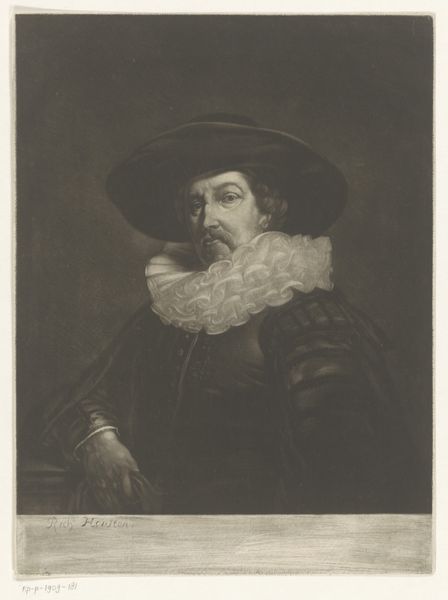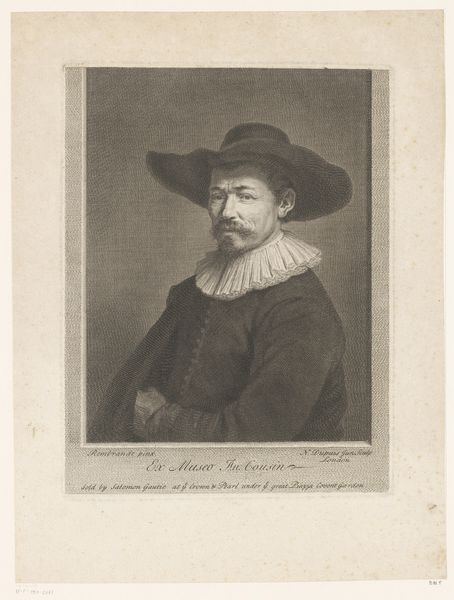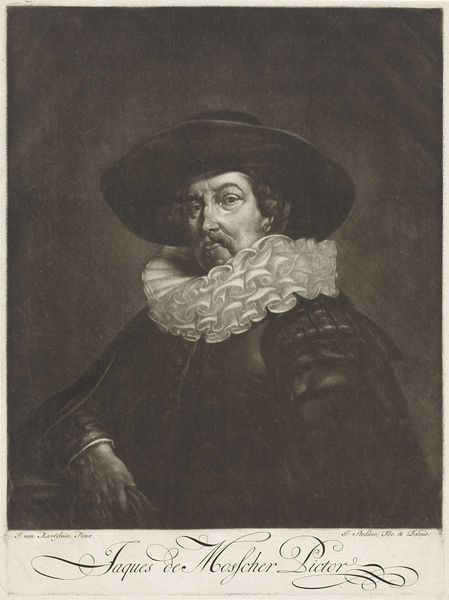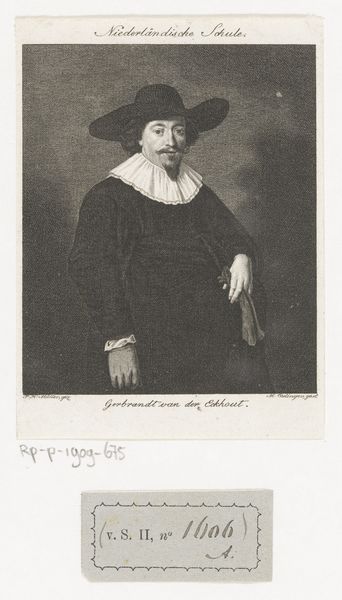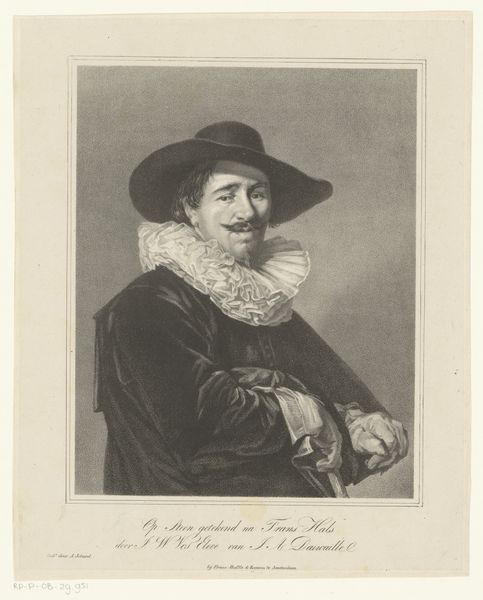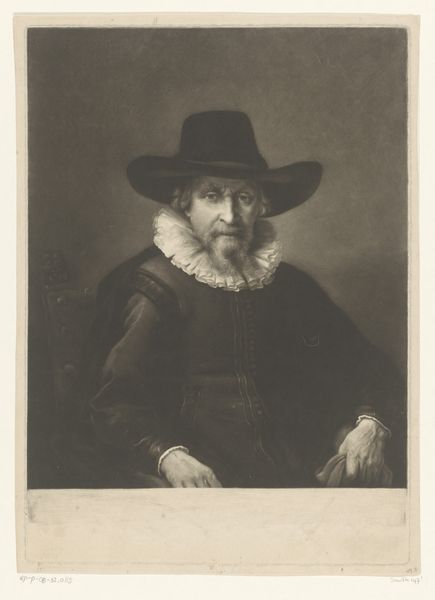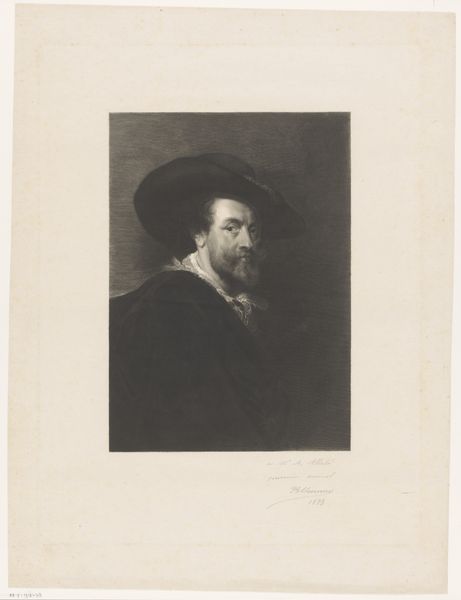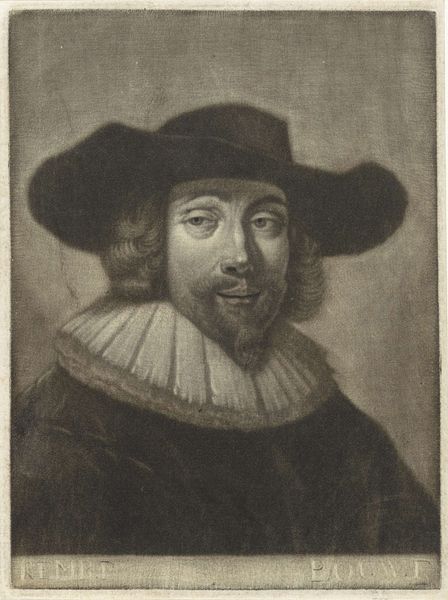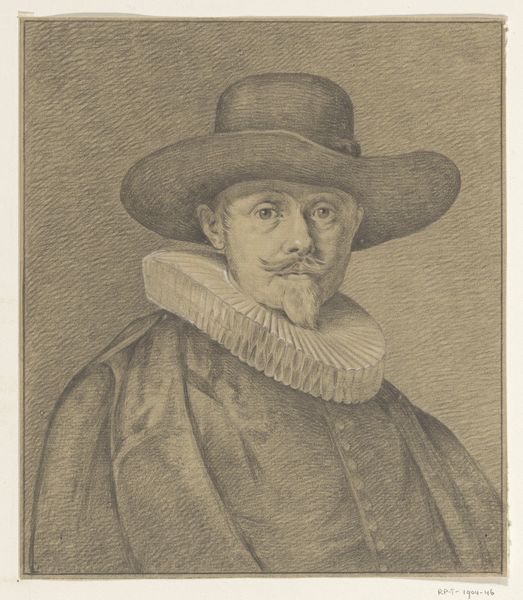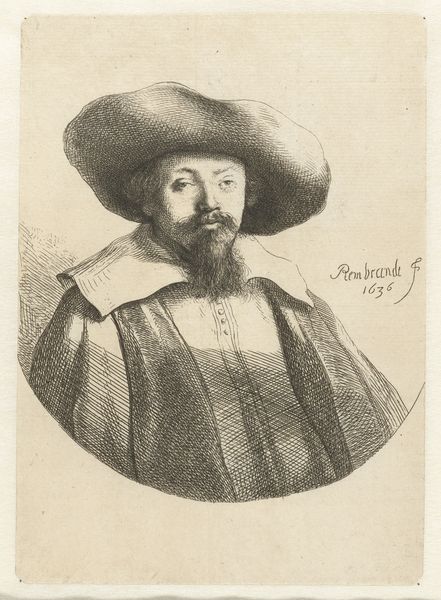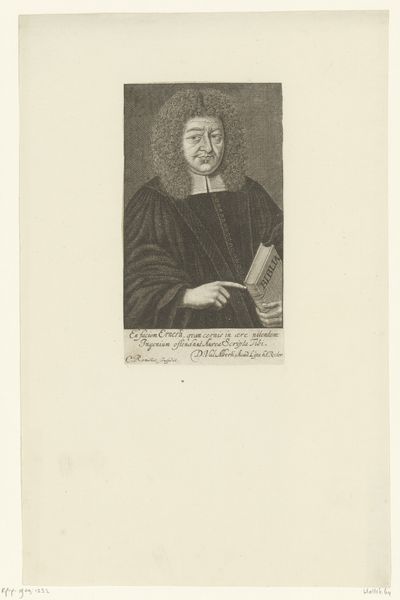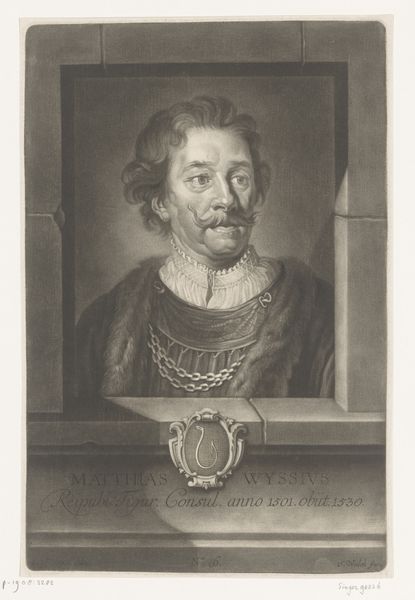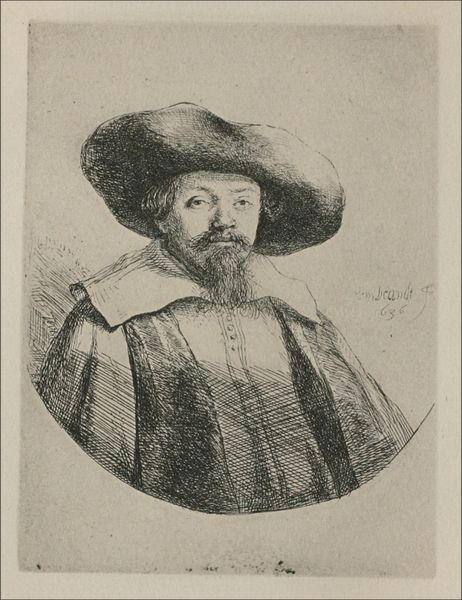
Dimensions: height 511 mm, width 353 mm
Copyright: Rijks Museum: Open Domain
Curator: This portrait, made using graphite and charcoal, presents us with a likeness of an unknown man, dating to the period of 1730-1804. Editor: He strikes me as intensely serious, almost severe. There's a starkness to the contrast of light and shadow that amplifies the intensity. Curator: Yes, the artist really captures a sense of presence. Look at the lines etched around his eyes, the subtle modelling of the cheekbones. It's all carefully rendered to convey not just a likeness, but perhaps a feeling or a state of mind. His clothing also suggests a story—the ruff, and the dark coat—imply a certain status or profession, wouldn't you say? Editor: Absolutely, that ruff, in particular, speaks to a rigid social structure. Those fashion choices are power signifiers; class, trade, affiliation are all coded through those items. Given the period, he could be a member of the bourgeoise attempting to position himself, or perhaps, an official from one of the merchant guilds looking to project seriousness and stature. The unknown status invites speculation: whose image gets immortalized and why? Who is remembered, and who is intentionally forgotten? Curator: Fascinating. And I am drawn to the recurring use of ruffs within the art of that era, an obvious historical symbol, but they come in different forms suggesting change and societal shifts reflected on their shapes. The figure looks as if his shoulders are restricted and confined as much as the model appears in the frame. Editor: His is a somber and restrained presentation, and this artwork feels both familiar and strangely distanced through this choice of attire. I find myself reflecting on the societal constraints inherent within the picture's construction. How do cultural expectations restrict individuals, much like the literal restraints present? It makes you think. Curator: Precisely! Even now, centuries later, it invites this reflective exchange. It remains, if not answers, a provocation of deeper significance beyond mere recognition. Editor: Yes, leaving us with questions about who he was, and what stories remain concealed beneath the charcoal strokes.
Comments
No comments
Be the first to comment and join the conversation on the ultimate creative platform.

